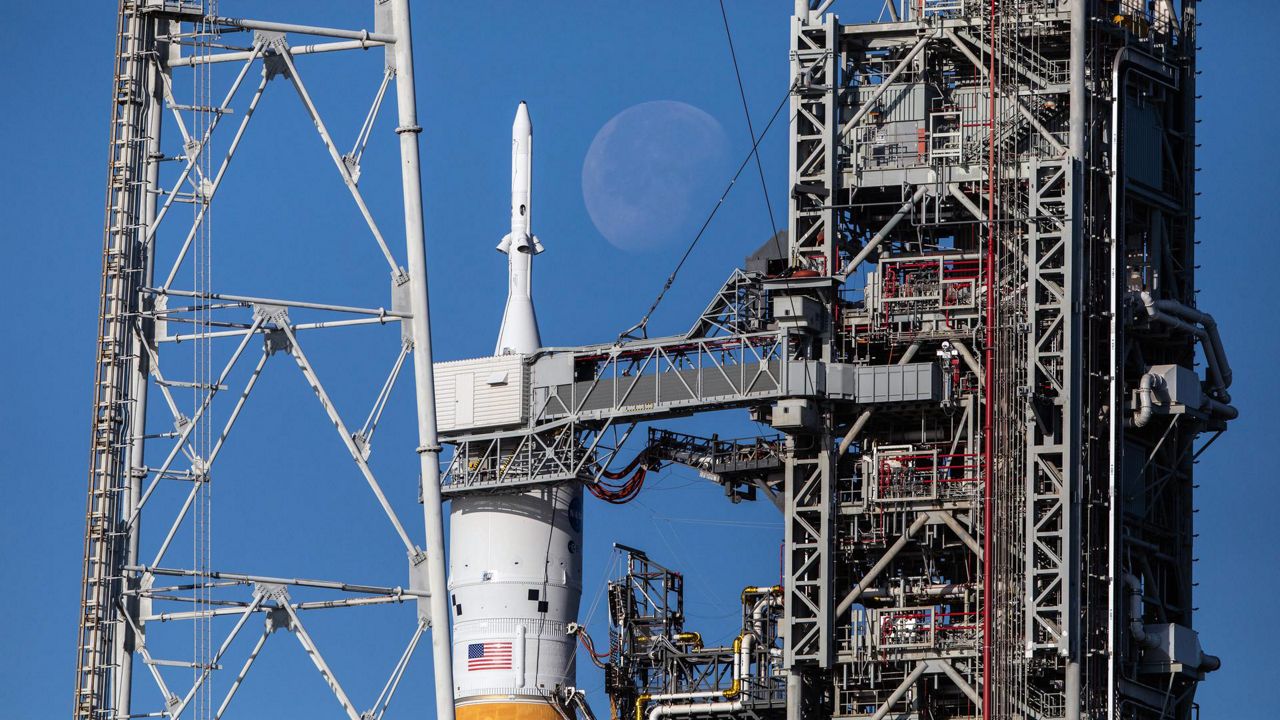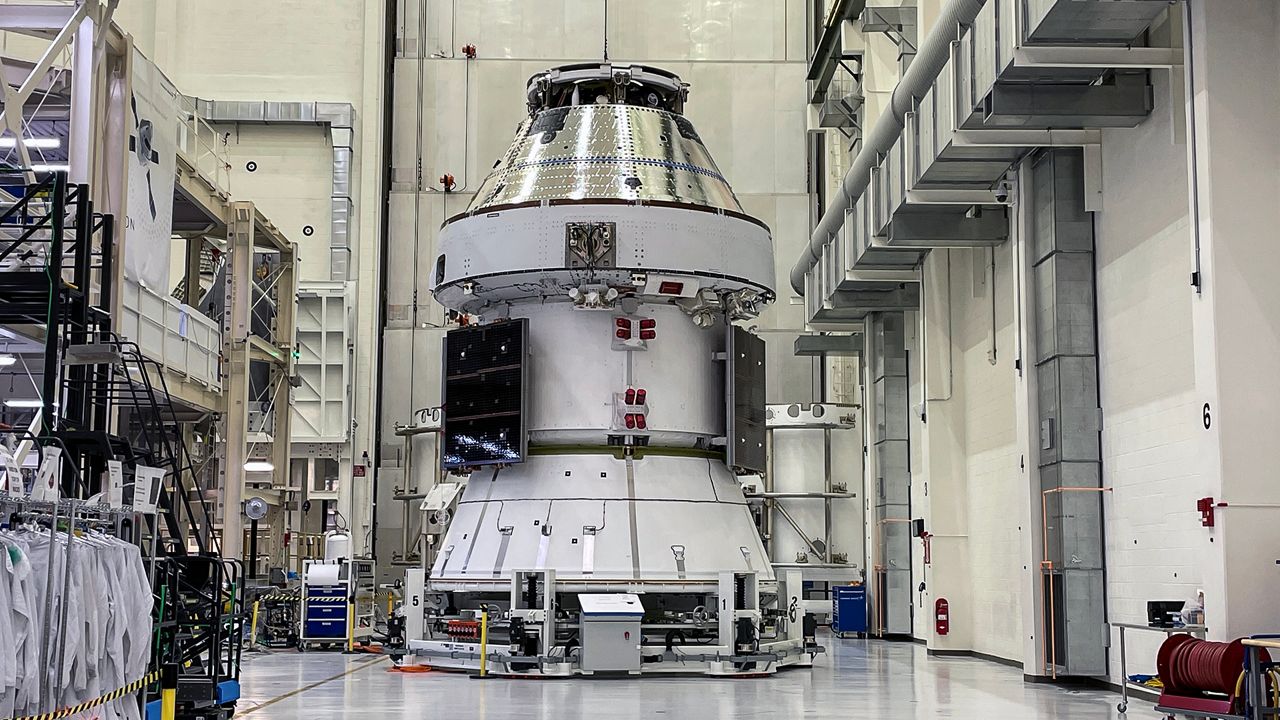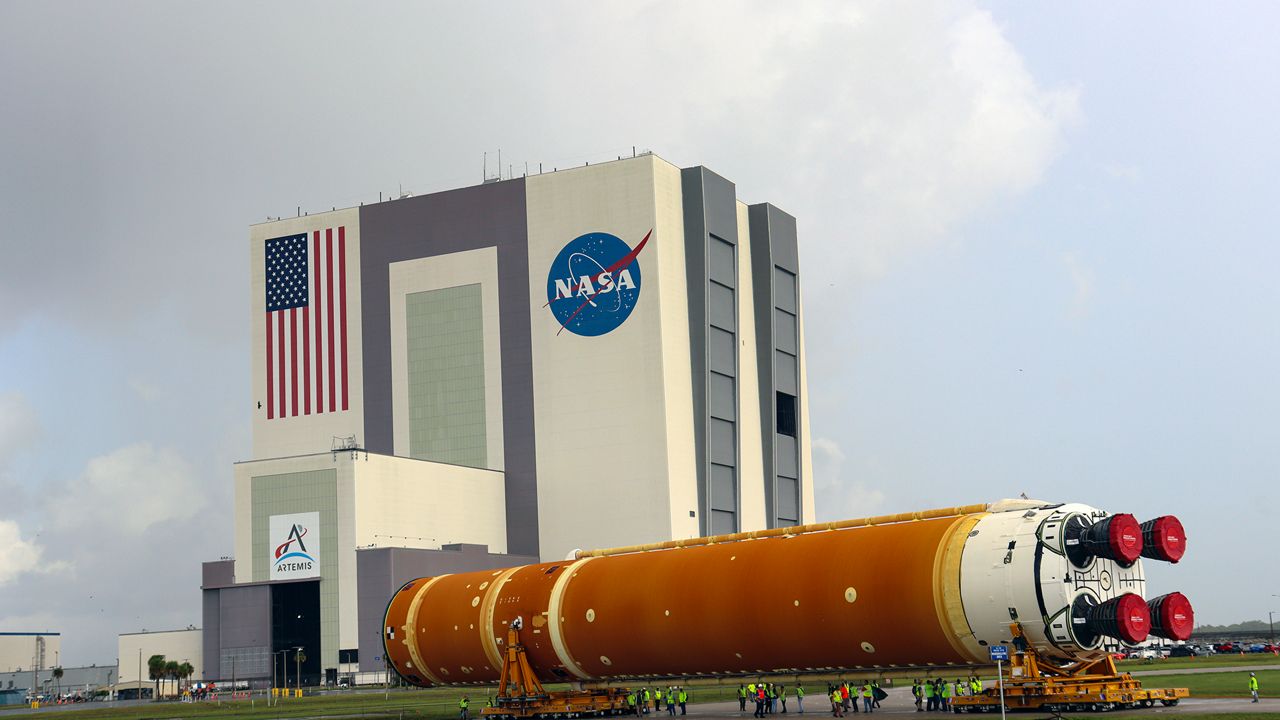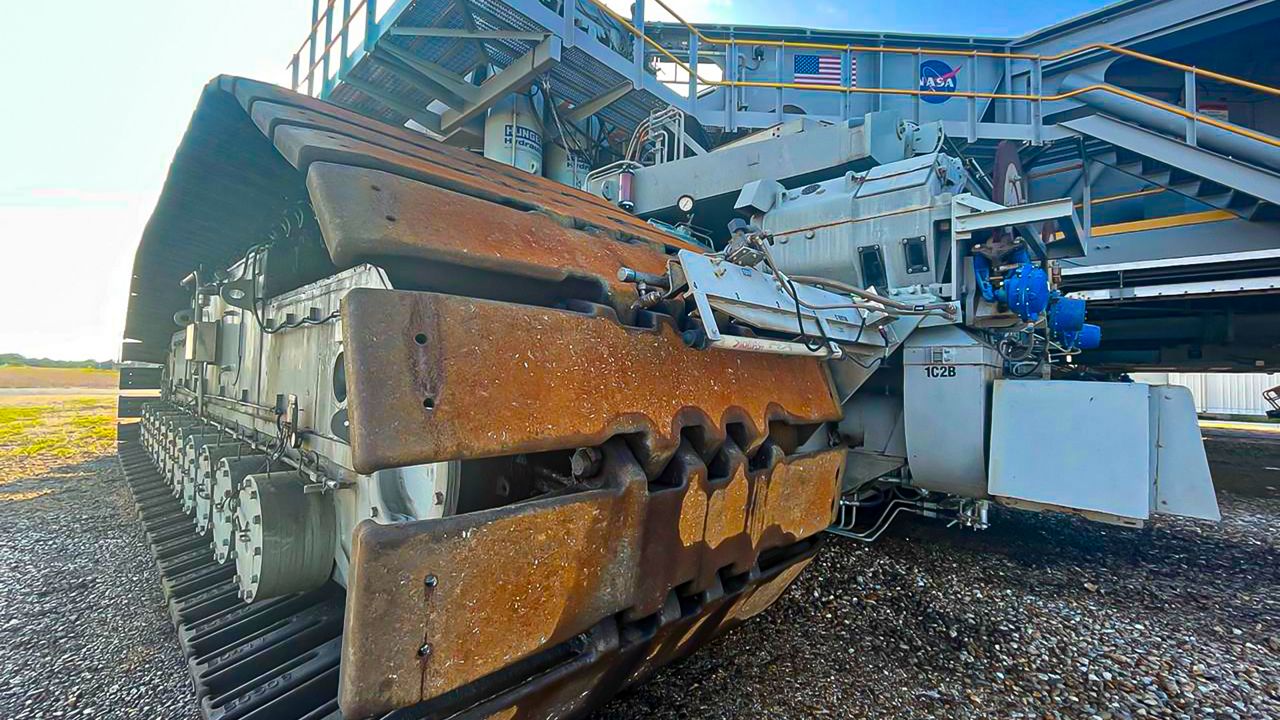KENNEDY SPACE CENTER — Despite being left out on the launch pad during Hurricane Nicole and suffering some wind damage, the Artemis moon launch is still a go, stated NASA officials on Monday night.
What You Need To Know
- The two main issues are loose caulk and an electrical connector, says NASA
- But NASA officials are confident to carry on with the launch
- Artemis uncrewed mission will see Space Launch System rocket, Orion spacecraft go to the moon
During a 30-minute delayed teleconference at 6:30 p.m., NASA officials gave a status update on the Artemis preparations for the launch that is currently still scheduled for Wednesday, Nov. 16, at 1:04 a.m. EST.
“The unanimous recommendation from the team was we were in a good position to go ahead and proceed into launch countdown,” said Jeremy Parsons, deputy manager for Exploration Ground Systems Program at Kennedy Space Center.
During two previous status updates (Sunday evening and Friday afternoon), NASA officials discussed the issue of the caulk (also known as room temperature vulcanizing/RTV) on the Orion spacecraft’s launch abort system that came loose during Hurricane Nicole on Thursday, Nov. 10.
“…engineers will conduct detailed analysis of several feet of delaminated caulk where the ogive on Orion’s launch abort system meets the crew module adapter. The analysis will assess risk should it come loose during launch,” NASA confirmed in a statement on Sunday.
Mike Sarafin, Artemis Mission manager, said during Monday night’s teleconference that NASA will not replace the caulk, but he did warn that there is a “non-zero chance” of it coming off during the flight and it could impact a different area of the Space Launch System rocket downstream of Orion.
But he stressed that the remaining caulk is bounded and within the acceptable risk.
About a 10-foot strip of the caulk, which is used to fill in the gap between the Orion’s stage adapter and the aerodynamic shell, came loose in pieces due to winds caused by Hurricane Nicole, the officials said on Monday night.
It was revealed that engineers do not have access at Launch Pad 39B to put more of the caulk on and the officials admitted that it would take time to roll the rocket and Orion back to the Vehicle Assembly Building to re-apply the material and then wait for it to dry.
NASA Associate Administrator for Exploration Systems Development Jim Free mentioned this issue during an Artemis moon launch update on Friday, Nov. 11.
Free also mentioned that one of the electrical umbilicals on the hydrogen tail service mass unit is having issues, that it was “exhibiting some erratic signals,” he said on Friday.
During Sunday evening’s update, NASA stated that technicians would remove and replace a component of an electrical connector in that section of the hydrogen tail service mast umbilical ground-side plate.
However, they are still seeing some inconsistent data provided through the connector, even though officials replaced the cable with the connector.
And on Monday night, it is still an issue, according to Sarafin.
“You know, we did attempt to fully resolve the electrical connector on the tail service mass umbilical and we’re still seeing some funnies on that particular umbilical but we reviewed,” he said.
NASA earlier confirmed this and stated it will not be an issue for Wednesday’s launch.
“Engineers have redundant sources for the information provided through the connector and it is not an impediment to launch,” NASA stated.
As of Monday night, engineers will charge all the flight batteries of the rocket and spacecraft, said Parsons.
The uncrewed moon mission has seen quite a few issues that have prevented the Artemis’ Space Launch System rocket and the Orion spacecraft from lifting off Launch Pad 39B to Earth’s lunar sister.
Those issues consist of liquid hydrogen leaks and hurricanes.








